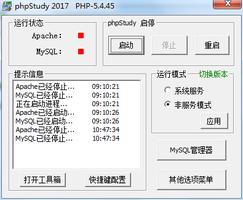python的正则表达式

1 元字符:
1.1 .
.除了换行符以外的任何单个字符
1.2 ^
^只匹配起始字符
temp1=re.findall('^morra','nsudi werwuirnmorra')temp2=re.findall('^morra','morransudi werwuirn')
print(temp1) #[]
print(temp2) #['morra']
1.3 $
$只匹配结尾字符
temp2=re.findall('morra$','morransudi werwuirn')temp1=re.findall('morra$','nsudi werwuirnmorra')
print(temp1) #['morra']
print(temp2) #[]
1.4 *
*匹配0到多次,等同于{0,}
temp1=re.findall('morra*','wwwmorr')temp2=re.findall('morra*','wwwmorra')
temp3=re.findall('morra*','wwwmorraa') #贪婪匹配
print(temp1) #['morr']
print(temp2) #['morra']
print(temp3) #['morraa']
1.5 +
+匹配1到多次,{1,}
temp1=re.findall('morra+','wwwmorr')temp2=re.findall('morra+','wwwmorra')
temp3=re.findall('morra+','wwwmorraa')
print(temp1) #[]
print(temp2) #['morra']
print(temp3) #['morraa']
1.6 ?
?匹配0到1次,{0,1}
temp1=re.findall('morra?','wwwmorr')temp2=re.findall('morra?','wwwmorra')
temp3=re.findall('morra?','wwwmorraa')
print(temp1) #['morr']
print(temp2) #['morra']
print(temp3) #['morra']
1.7 { }
{ }自定义匹配次数:{1}匹配1次,{1,2}匹配1到2次
temp1=re.findall('morra{0}','wwwmorr')temp2=re.findall('morra{2}','wwwmorra')
temp3=re.findall('morra{2}','wwwmorraa')
print(temp1) #['morr']
print(temp2) #[]
print(temp3) #['morraa']
1.8 [ ]
[ ]字符集,只匹配单个字符
temp2=re.findall('morr[ab]','wwwmorra')temp3=re.findall('morr[ab]','wwwmorrab')
print(temp2) #['morra']
print(temp3) #['morra']
注意:元字符在字符集里就不再具有特殊意义,变成了普通字了,但是\d \w \s除外
temp4=re.findall('morr[?]','wwwmorr?') #['morr?']temp1=re.findall('[ab]','wwwmorrab.ab') #['a', 'b', 'a', 'b']
temp2=re.findall('[1-9]','wwwmorr1234') #['1', '2', '3', '4']
例外
temp5 = re.findall('[\d]', 'www.m12orr1234') #['1', '2', '1', '2', '3', '4']
temp6 = re.findall('[\w]', 'www.m12') #['w', 'w', 'w', 'm', '1', '2']
temp7 = re.findall('[\s]', 'www.m12or r1234') #[' ']
1.9 ^
^反向匹配
temp1=re.findall('[^1-9]','www.m12orr1234') #匹配除数字意外的所有字符
print(temp1) #['w', 'w', 'w', '.', 'm', 'o', 'r', 'r']
1.10 \
\是最重要的元字符,可实现的功能如下:
(1) 后面跟元字符就是去除其特殊功能。
(2) 后面跟普通字符可以实现一些特殊功能,
(3) 引用序号对应的字组所匹配的字符串。
1.10.1 后面跟元字符就是去除其特殊功能。
temp1 = re.findall('\$', 'www.m12$orr1234')print(temp1) #['$']
1.10.2 后面跟普通字符可以实现一些特殊功能。
可实现的功能如下:
\d 匹配任何单个十进制数,等同于[0-9],如果想匹配多个可以使用\d\d,\d+,\d{2}
temp1 = re.findall('\d', 'www.m12orr1234')temp2 = re.findall('\d\d', 'www.m12orr1234')
temp3 = re.findall('\d\d\d', 'www.m12orr1234')
temp4 = re.findall('\d{2,3}', 'www.m12orr1234') # 匹配2次,或3次
print(temp1) # ['1', '2', '1', '2', '3', '4']
print(temp2) # ['12', '12', '34']
print(temp3) # ['123']
print(temp4) # ['12', '123']
\D 匹配任何非数字字符,等同于[^0-9]
\s 匹配任何空白字符,等同于[ \t\n\r\f\v]
\S 匹配任何非空白字符,等同于[^ \t\n\r\f\v]
\w 匹配任何字母数字字符,等同于[A-Za-z0-9]
\W 匹配任何非字母数字字符,等同于[^A-Za-z0-9]
\b 匹配一个单词边界,也就是指单词和空格间的位置
temp = re.findall(r"abc\b", "asdas abc 1231231")print(temp) #['abc']
temp = re.findall("abc\\b", "asdas abc 1231231")
print(temp) #['abc']
temp = re.findall(r"abc\b", "asdas*abc*1231231")
print(temp) #['abc'],同样也可以识别特殊字符和单词之间的边界
temp = re.findall(r"abc2\b", "asdas*abc2*31231")
print(temp) #['abc2'],同样也可以识别特殊字符和单词之间的边界
temp = re.findall(r"\bI", "I MISS IOU")
print(temp) #['I', 'I']
1.10.3 引用序号对应的字组所匹配的字符串。
temp = re.search(r'(alex)(eric)com\1', 'alexericcomalex').group() #alexericcomalex,\1就是第一组等同于alextemp2 = re.search(r'(alex)(eric)com\2', 'alexericcomeric').group() #alexericcomeric,\2就是第二组等同于eric
2 正则函数
返回一个对象:match、search、finditer
返回一个列表:findall、split
2.1 match
match,从头匹配,使用的比较多
def match(pattern, string, flags=0): """
match(规则,字符串,标志位)
flag(标志位)用于修改正则表达式的匹配方式,常见的工作方式如下:
re.I 使匹配对大小写不敏感
re.L 做本地化识别(local-aware)匹配
re.M 多行匹配,影响^和$,不匹配换行符
re.S 使.匹配包括换行在内的所有字符
"""
"""Try to apply the pattern at the start of the string, returning
a match object, or None if no match was found."""
return _compile(pattern, flags).match(string)
2.2search
匹配字符串,匹配到一个后,就不再往下匹配了。
- 非贪婪匹配
从前面可以看到'*','+','?'都是贪婪的。但是一旦在\d+后面加上?之后,就表示非贪婪匹配。
temp = re.search(r'a(\d+?)','a23b').group() #a2temp = re.search(r'a(\d+?)b','a23b').group() #ab,当()再a、b中间的时候?的作用失效,整个匹配又成了贪婪模式
match()
2.3findall
将所有匹配到的所有内容都放置在一个列表中。
2.3.1 findall的优先匹配原则
findall与search、match等不同的是,他会优先取组里的内容,可以使用?:来关闭
temp = re.findall(r"www.(bing|google).com", "123 www.bing.com123www.google.com123")print(temp) #['bing', 'google'],只把组里的内容匹配到了
temp = re.findall(r"www.(?:bing|google).com", "123 www.bing.com123www.google.com123")
print(temp) #['www.bing.com', 'www.google.com'],#在(后面加上?:可以关闭findall的优先捕获功能
2.3.2 匹配顺序
一旦有字符被匹配到,就会把匹配到的字符拿走,然后再匹配剩下的字符,如下。
n = re.findall("\d+\w\d+","a2b3c4d5")print(n) #['2b3', '4d5'],
2.3.3 匹配空值
当匹配规则为空时,如果没有匹配到也会把空值放到结果中:
n = re.findall("","a2b3c4d5")print(n) #['', '', '', '', '', '', '', '', '']
因此在写python正则的时候,要尽量使正则不为空
n = re.findall(r"(\w)+", "alex") #推荐写法print(n) # ['x']
n = re.findall(r"(\w)*", "alex") #不推荐写法
print(n) # ['x','']
2.3.4 findall的分组匹配
temp = re.findall('a(\d+)','a23b') #['23']temp = re.findall('a(\d+?)','a23b') #['2'],非贪婪模式匹配
temp = re.findall(r'a(\d+?)b', 'a23b') # ['23'],当()再a、b中间的时候?的作用失效,整个匹配又成了贪婪模式
match()
如果正则里有一个组,那么会把组里匹配到的元素加入到最终的列表里。
如果正则里有一个组,会把元素合并到一个元组里,然后作为列表的一个元素。
n = re.findall(r"(\w)", "alex")print(n) # ['a', 'l', 'e', 'x']
n = re.findall(r"(\w)(\w)(\w)(\w)", "alex")
print(n) # [('a', 'l', 'e', 'x')],有几个括号就取几次
n = re.findall(r"(\w){4}", "alex")
print(n) # ['x'],有几个括号就取几次
n = re.findall(r"(\w)*", "alex")
print(n) # ['x',''],有几个括号就取几次
2.4 finditer
finditer返回的是个可迭代的对象
p = re.compile(r'\d+')source = '12 dsnjfkbsfj1334jnkb3kj242'
w1 = p.finditer(source)
w2 = p.findall(source)
print(w1) #<callable_iterator object at 0x102079e10>
print(w2) #['12', '1334', '3', '242']
for match in w1:
print(match.group(), match.span())
"""
12 (0, 2)
1334 (14, 18)
3 (22, 23)
242 (25, 28)
"""
p = re.compile(r'\d+')iterate = p.finditer('')
for match in iterate:
match.group(), match.span()
2.5 分组匹配
a = '123abc456'temp1 = re.search("([0-9]*)([a-z]*)([0-9]*)", a).group(0) #123abc456
temp2 = re.search("([0-9]*)([a-z]*)([0-9]*)", a).group(1) #123
temp3 = re.search("([0-9]*)([a-z]*)([0-9]*)", a).group(2) #abc
temp4 = re.search("([0-9]*)([a-z]*)([0-9]*)", a).group(3) #456
temp5 = re.search("([0-9]*)([a-z]*)([0-9]*)", a).group(1,3) #('123', '456')
temp6 = re.search("([0-9]*)([a-z]*)([0-9]*)", a).group(1,2,3) #('123', 'abc', '456')
print(temp1)
print(temp2)
print(temp3)
print(temp4)
print(temp5)
print(temp6)
match、search、findall都有两个匹配方式:简单匹配和分组匹配
2.5.1 无分组:
import reorigin = "hello morra bcd morra lge morra acd 19"
r = re.match("h\w+", origin)
print(r.group()) #hello,获取匹配到的所有结果
print(r.groups()) #(),获取模型中匹配到的分组结果
print(r.groupdict()) #{},获取模型中匹配到的分组中所有执行了key的组
2.5.2 有分组:
import reorigin = "hello morra bcd morra lge morra acd 19"
r = re.match("h(\w+)", origin)
print(r.group()) #hello,获取匹配到的所有结果
print(r.groups()) #('ello',),获取模型中匹配到的分组结果
print(r.groupdict()) #{},获取模型中匹配到的分组中所有执行了key的组
2.5.3 多个分组
import reorigin = "hello morra bcd morra lge morra acd 19"
r = re.match("(?P<n1>h)(?P<n2>\w+)", origin)
print(r.group()) #hello,获取匹配到的所有结果
print(r.groups()) #('h', 'ello'),获取模型中匹配到的分组结果
print(r.groupdict()) #{'n2': 'ello', 'n1': 'h'},获取模型中匹配到的分组中所有执行了key的组
2.6 分割:
def split(pattern, string, maxsplit=0, flags=0): return _compile(pattern, flags).split(string, maxsplit)
#maxsplit=0,最多分割次数
2.6.1 split优先匹配
由于split和findall一样结果返回的是所有元素的列表,因此他和findall一样具有优先匹配特性
2.6.2 有组与无组
origin = "hello alex bcd abcd lge acd 19"n = re.split("a\w+",origin,1)
print(n) #['hello ', ' bcd abcd lge acd 19'],无组分割,结果不含自己
origin = "hello alex bcd abcd lge acd 19"
n = re.split("(a\w+)",origin,1)
print(n) #['hello ', 'alex', ' bcd abcd lge acd 19'],有组分割,结果会包含自己
origin = "hello alex bcd abcd lge acd 19"
n = re.split("a(\w+)",origin,1)
print(n) #['hello ', 'lex', ' bcd abcd lge acd 19'],有组分割,结果会包含自己
2.6.3 特殊情况分析
temp = re.split('\d+','one1two2three3four4')print(temp) #['one', 'two', 'three', 'four', '']
temp = re.split('\d+','1one1two2three3four4')
print(temp) #['', 'one', 'two', 'three', 'four', '']
temp = re.split('[bc]', 'abcd')
print(temp) # ['a', '', 'd'] #思考题
2.7 替换:
2.7.1 sub
temp = re.sub('g.t', 'have', 'I get A,I got B,I gut C') # I have A,I have B,I have Ctemp = re.sub('g.t', 'have', 'I get A,I got B,I gut C', count=0) # I have A,I have B,I have C,count默认为0,全部替换
temp = re.sub('g.t', 'have', 'I get A,I got B,I gut C', count=1) # I have A,I got B,I gut C
temp = re.sub('g.t', 'have', 'I get A,I got B,I gut C', count=2) # I have A,I have B,I gut C
temp = re.sub('g.t', 'have', 'I get A,I got B,I gut C', 2) # I have A,I have B,I gut C
temp = re.sub('g.t', 'have', 'I get A,I got B,I gut C', count=3) # I have A,I have B,I have C
temp = re.sub('g.t', 'have', 'I get A,I got B,I gut C', 3) # I have A,I have B,I have C
2.7.2 subn
subn最后会统计被替换的次数:
temp = re.subn('g.t', 'have', 'I get A,I got B,I gut C') #('I have A,I have B,I have C', 3),一共被替换了三次2.8 编译:
compile可以吧一个规则编译到一个对象里,在多次批量调用的时候比较方便
text = "g123dwsdsam cool coolksf"regex = re.compile(r'\w*oo\w*')
temp = regex.findall(text) # 查找所有包含'oo'的单词
print(temp) #['cool', 'coolksf']
3 应用
3.1 计算器
import resource = "1 - 2 * (( 60-30 + (-9-2-5-2*3-5/3-40*4/2-3/5+6*3)*(-9-2-5-2*5/3 +7/3*99/4*2998 + 10 * 568 /14)) -(-4*3)/(16-3*2))"
temp = re.search("\([^()]+\)",source).group() #匹配括号里的内容
print(temp)
source2 = '2**3' #幂运算
re.search('\d+\.?\d*([*/]|\*\*)\d+\.?\d*',source2) # \d+\.?\d* 匹配一个数(整数或浮点数),[*/]|\*\*匹配乘除,或幂运算
print(source2)
print(2**3)
3.2 匹配IP
source = "13*192.168.1.112\12321334"temp= re.search(r"(([01]?\d?\d|2[0-4]\d|25[0-5])\.){3}([01]?\d?\d|2[0-4]\d|25[0-5])",source).group()
print(temp) #192.168.1.112
4 补充
为了防止python语法和正则语法冲突,在正则匹配规则前面加前面建议加r
temp = re.findall(r"abc\b", "asdas abc 1231231")print(temp) #['abc']
temp = re.findall("abc\\b", "asdas abc 1231231")
print(temp) #['abc']
以上是 python的正则表达式 的全部内容, 来源链接: utcz.com/z/388658.html




